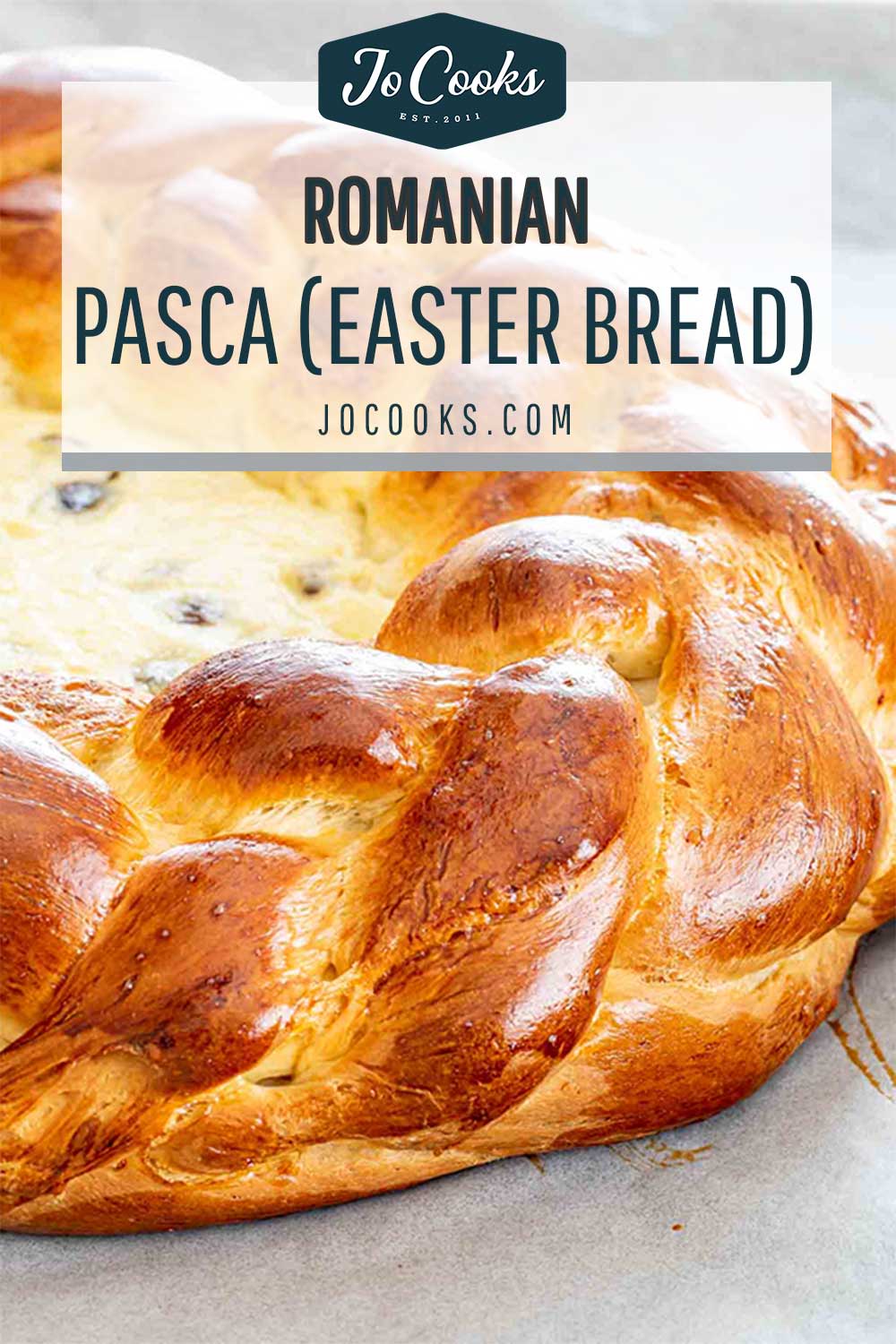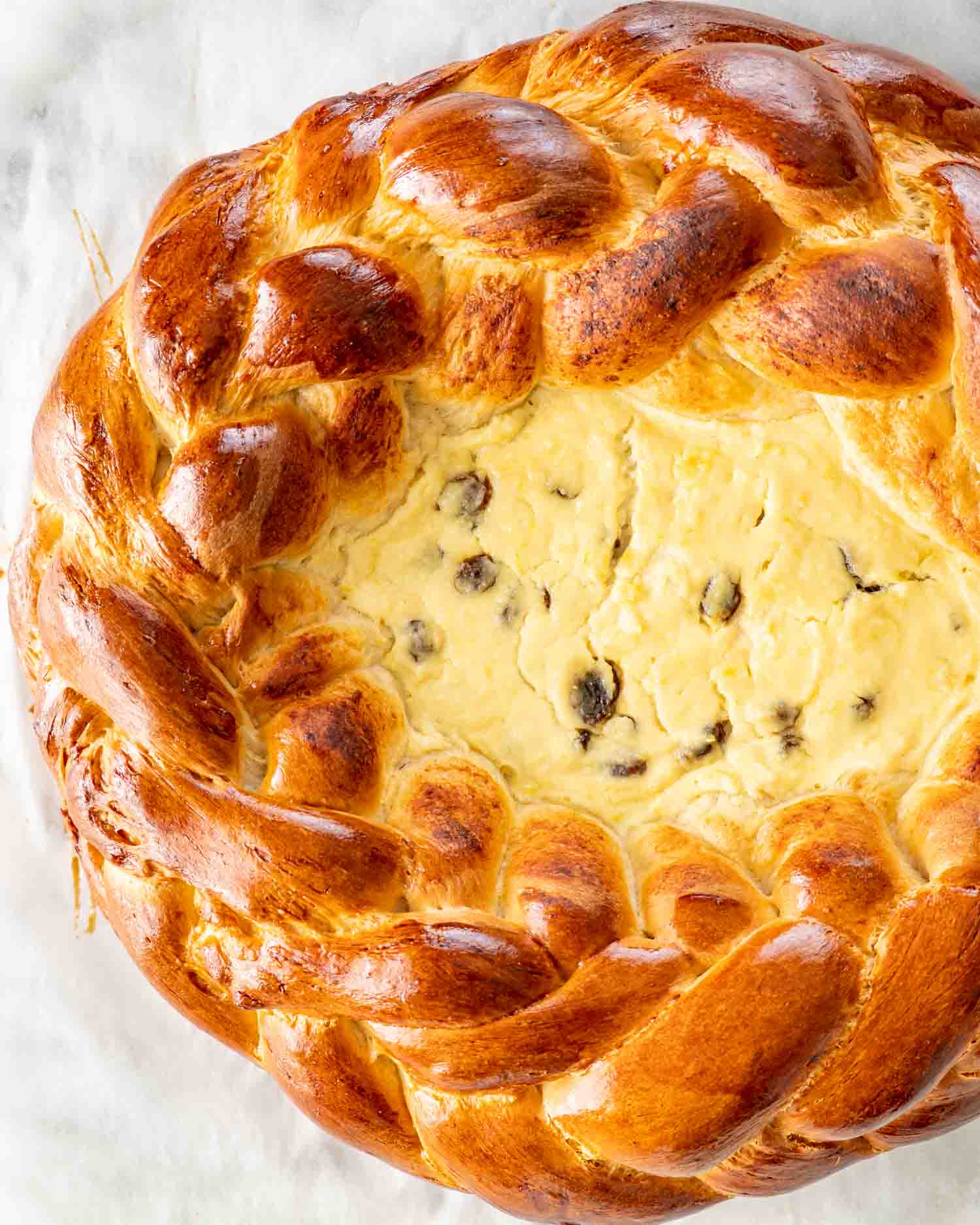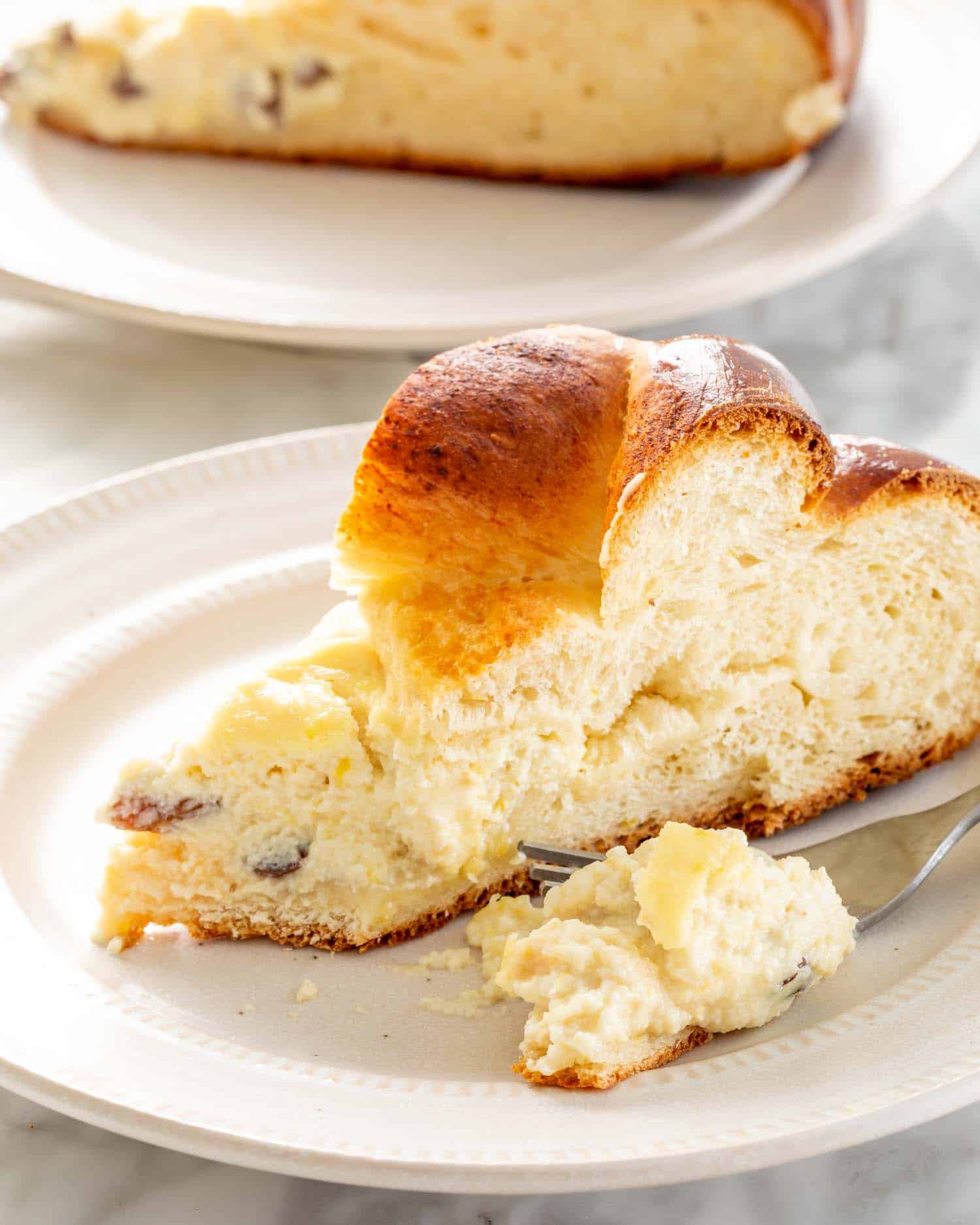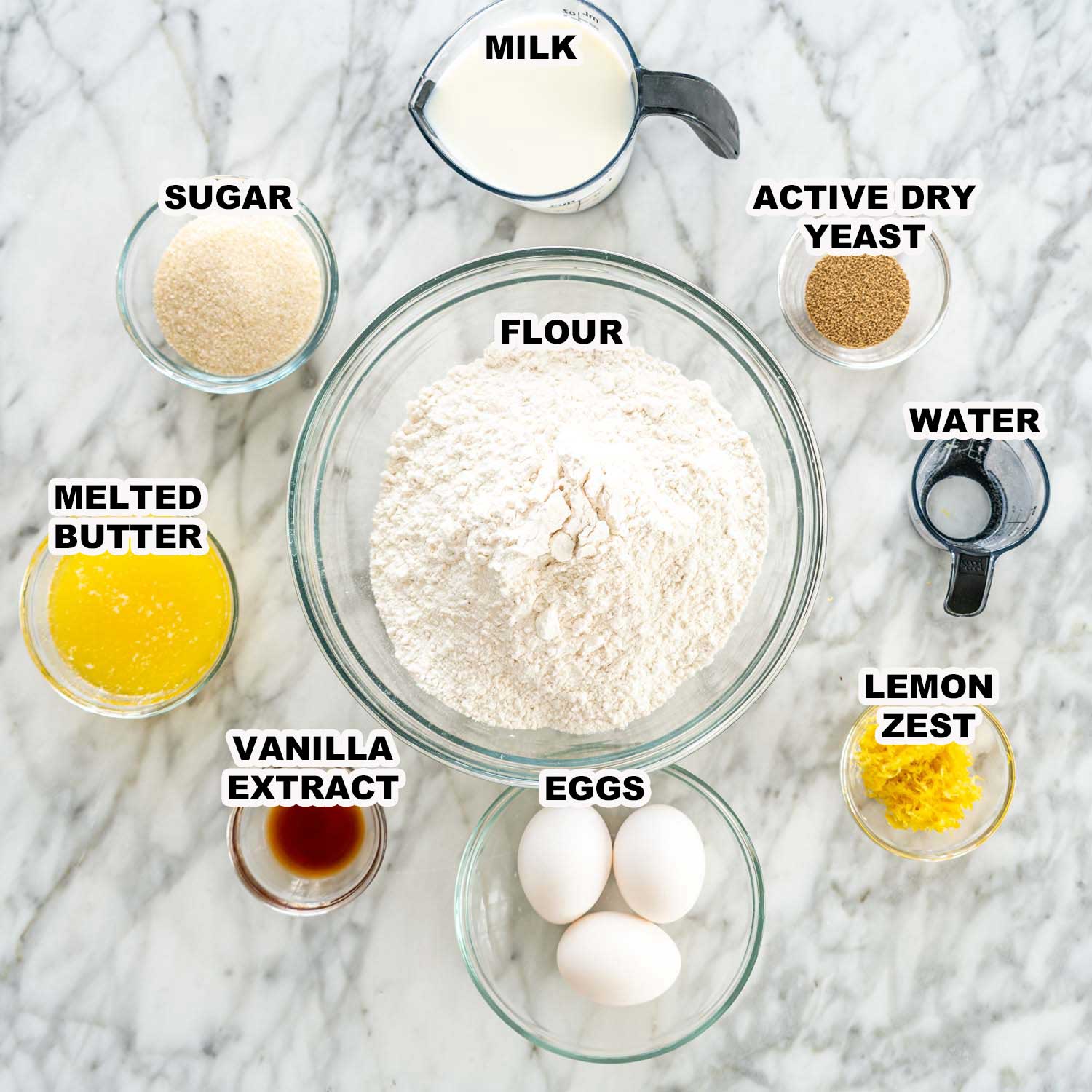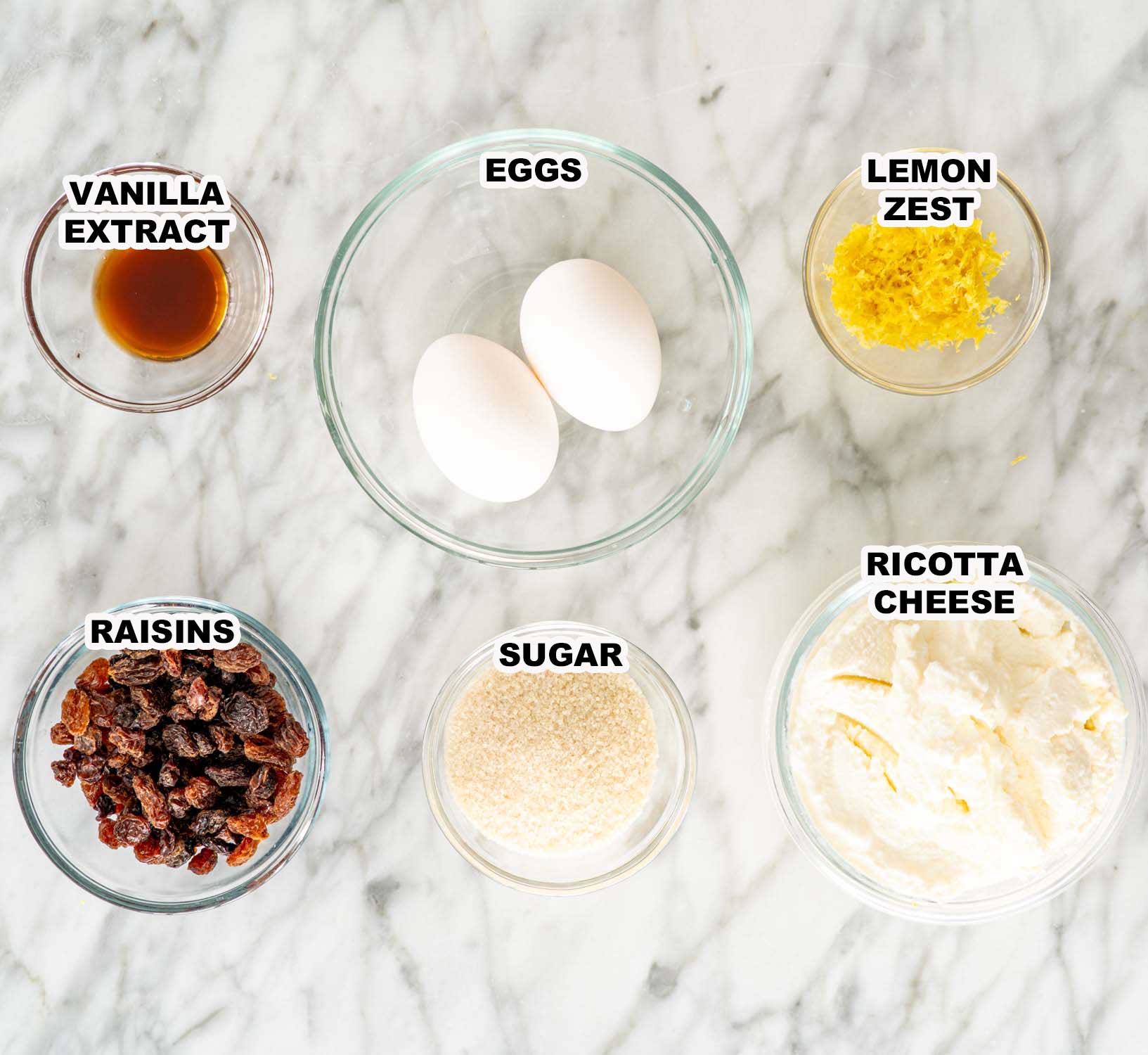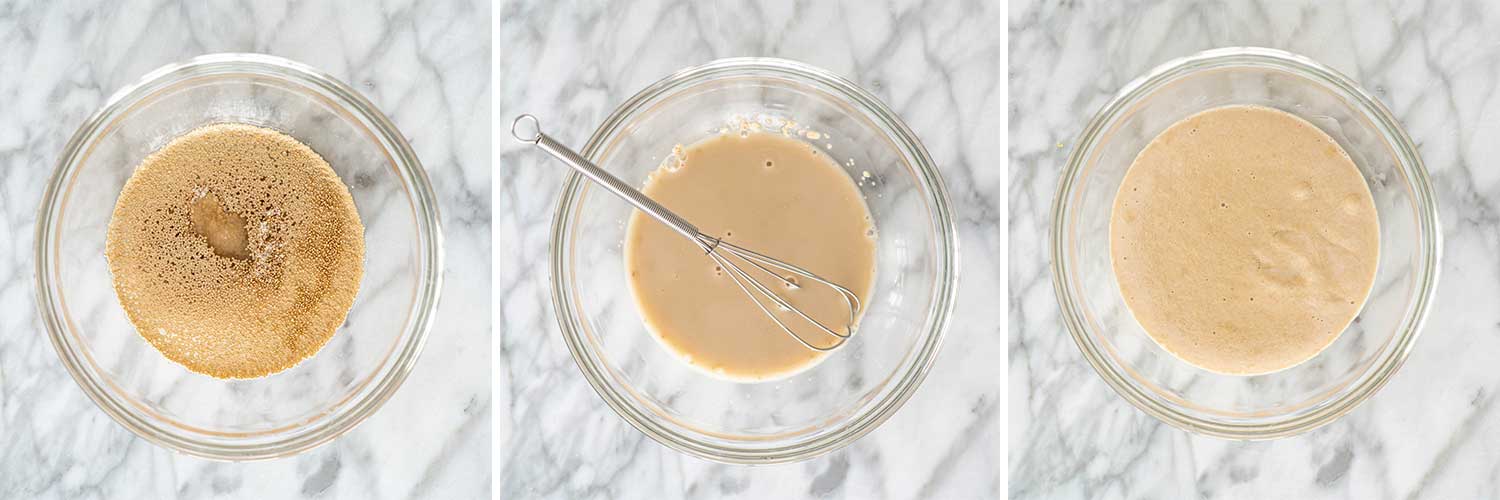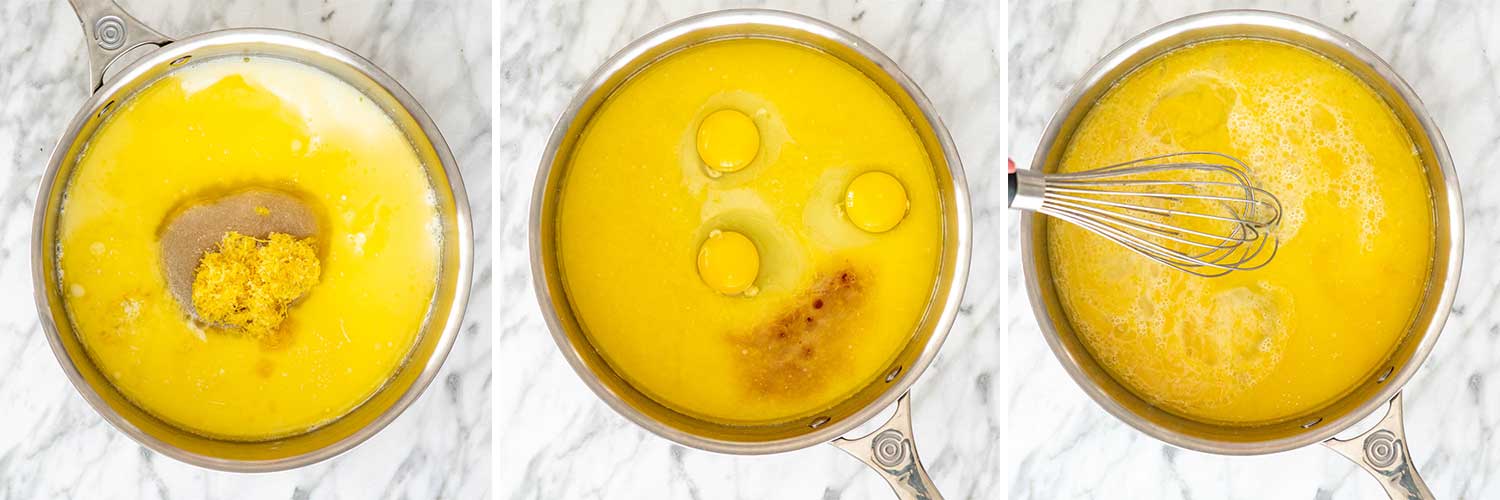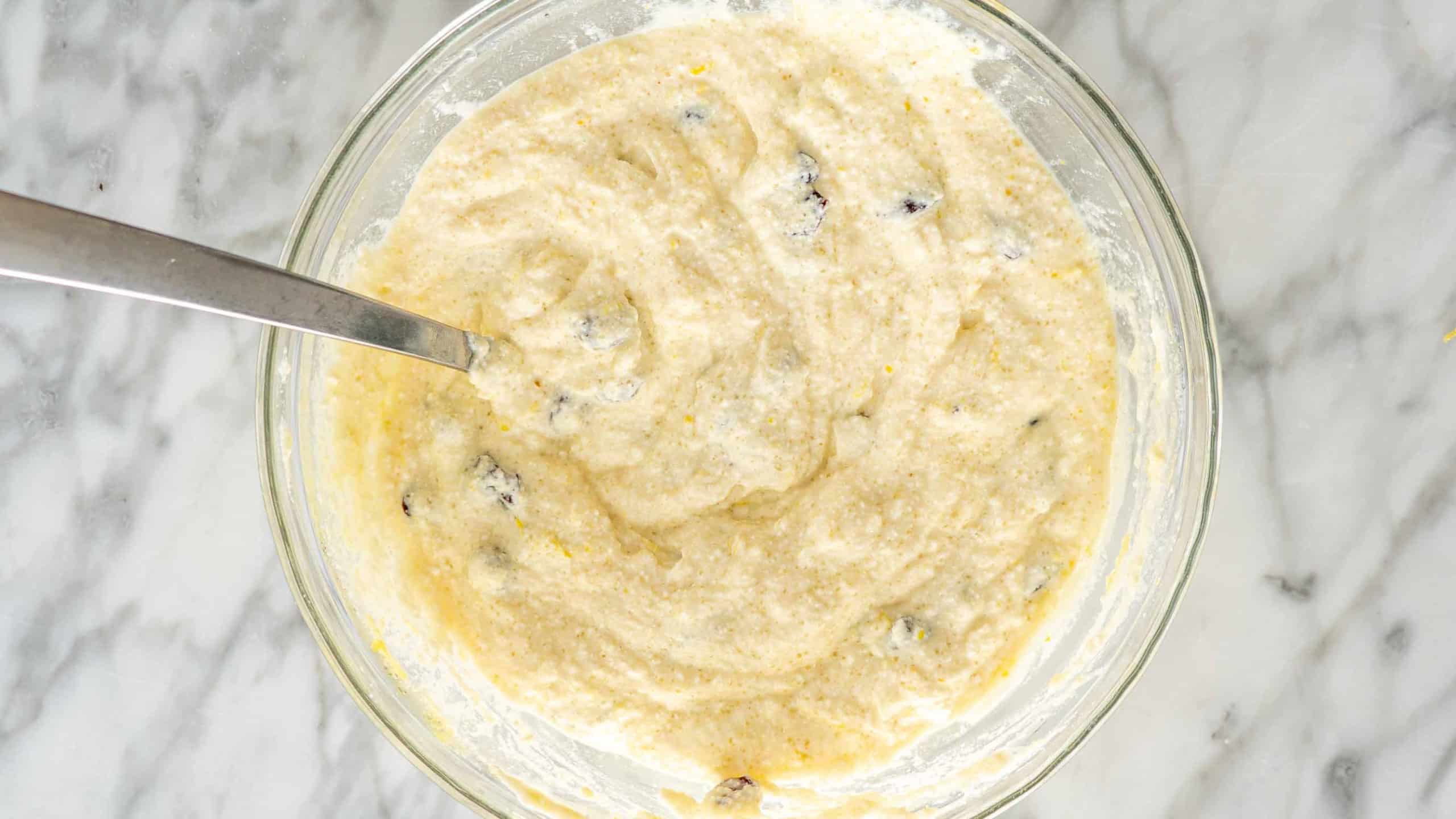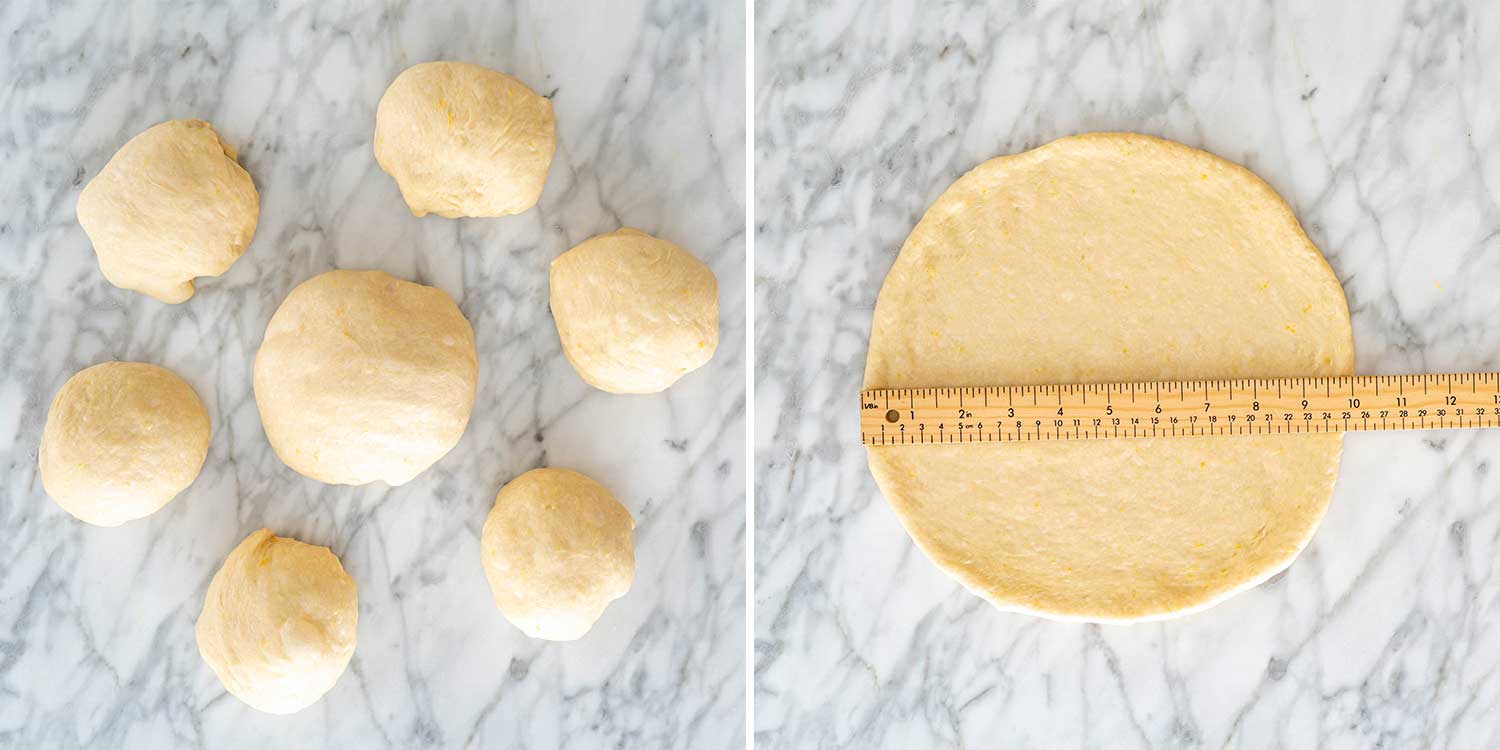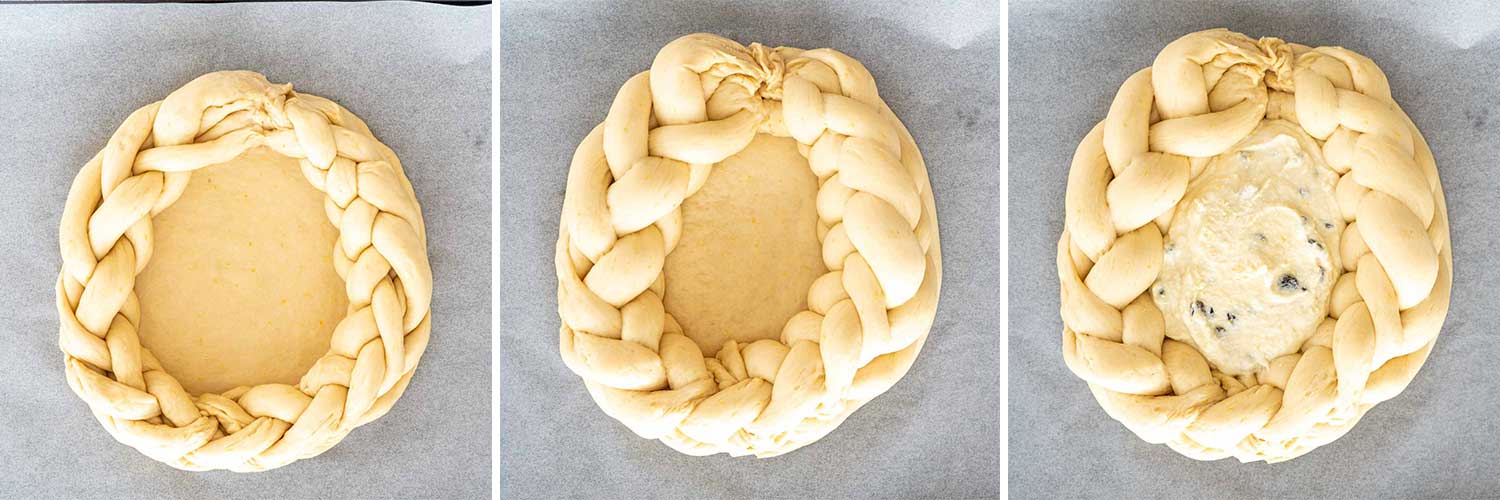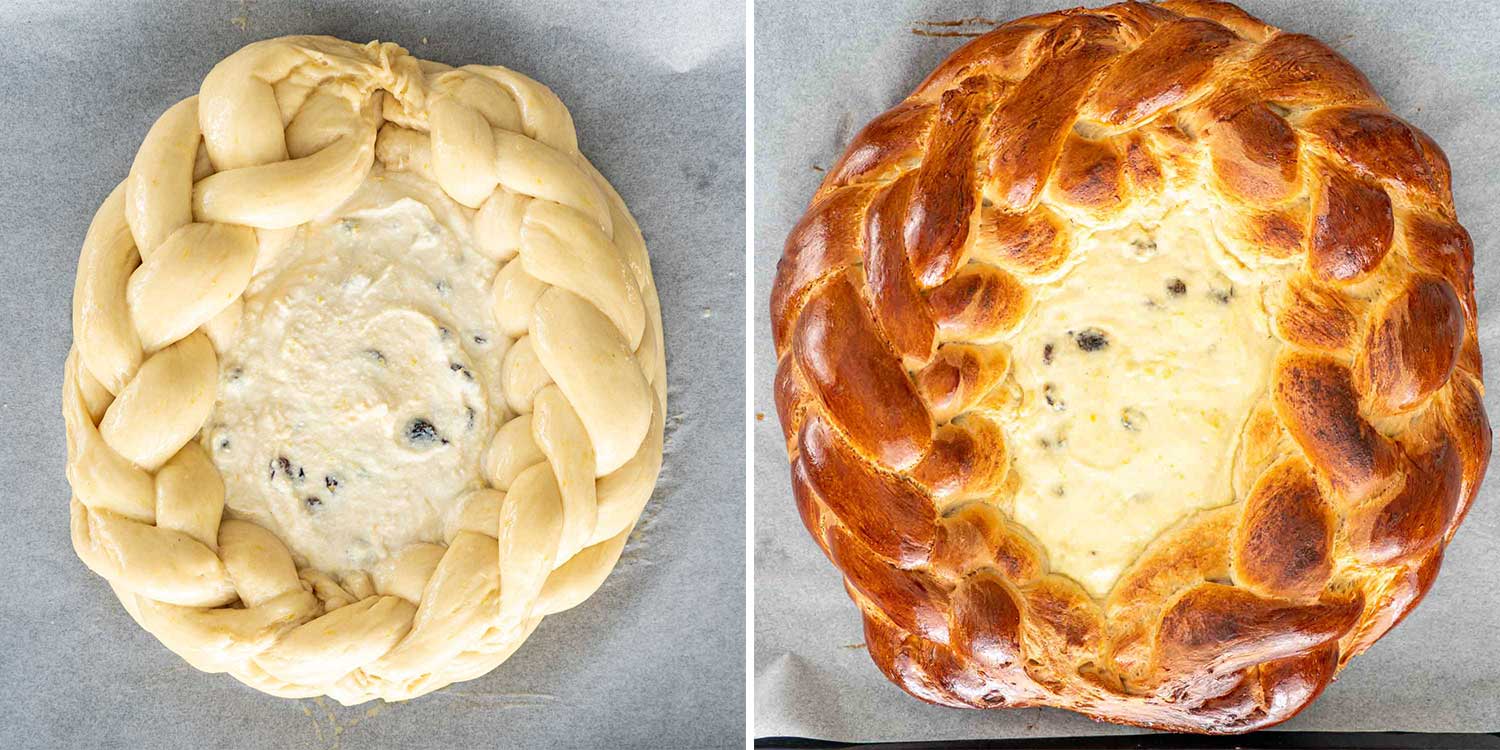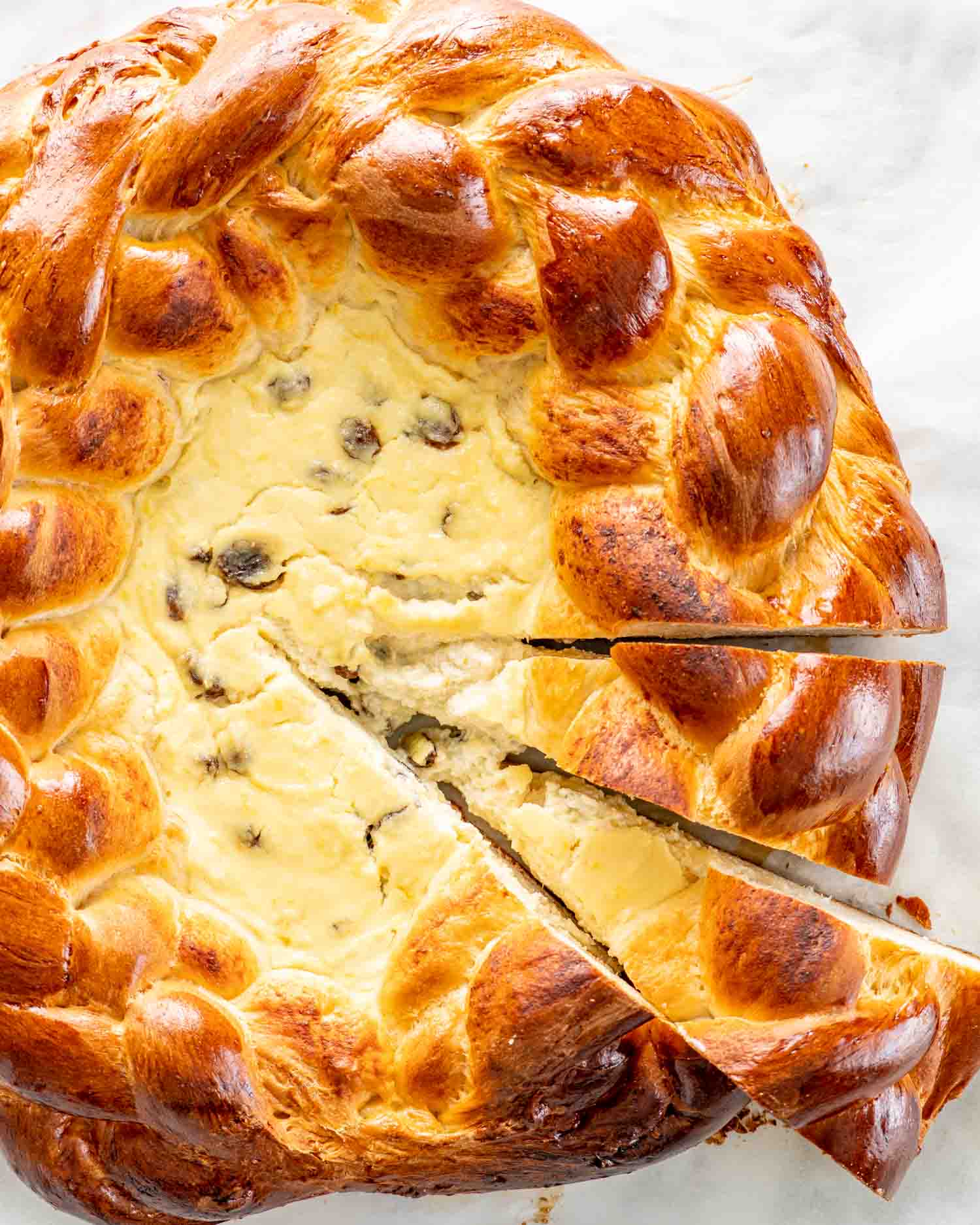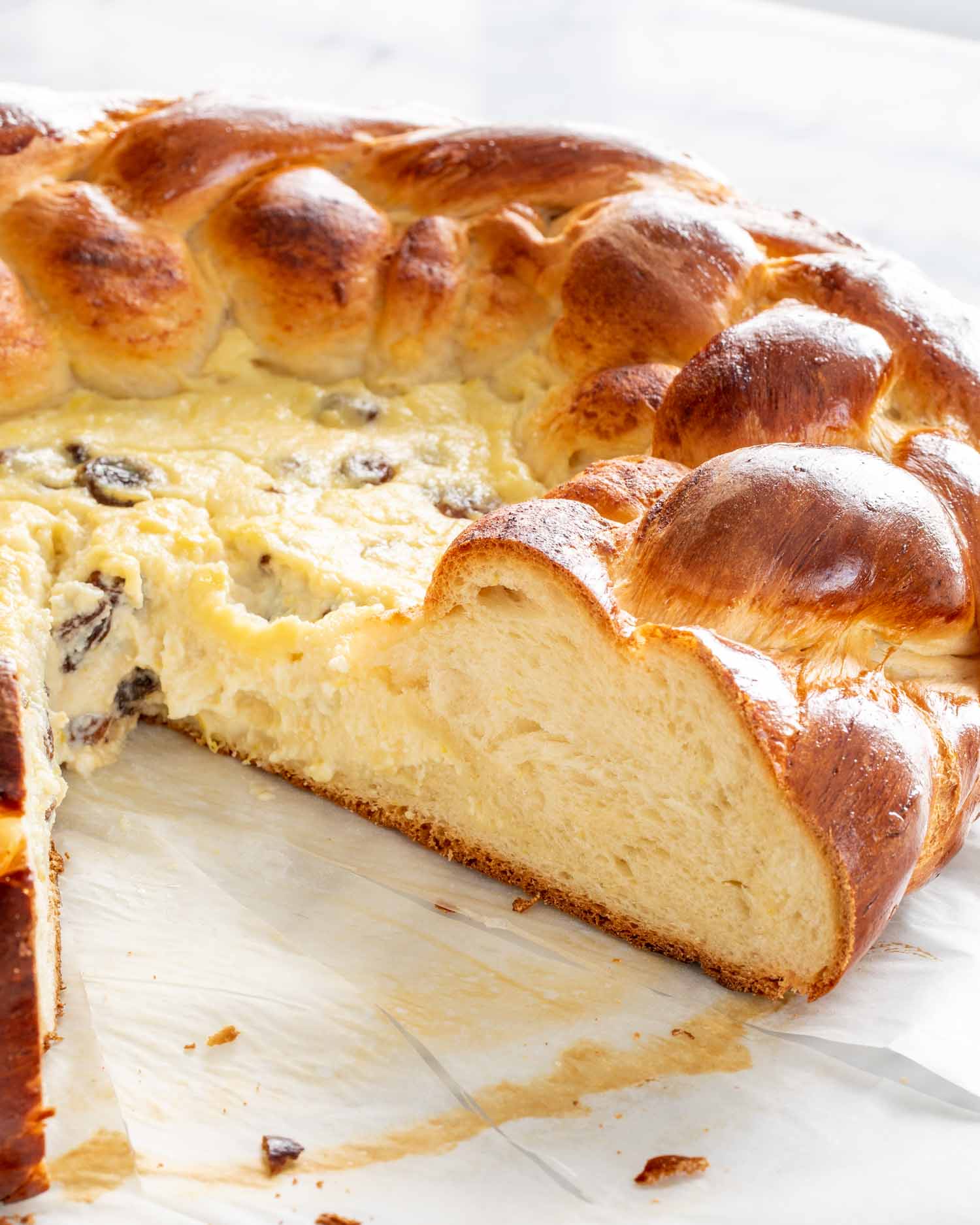Pasca – Romanian Easter Bread
I’ve had so many requests for this amazing Romanian Easter Bread, and here I am with, what I think is, the best version! Using a similar dough that my Cozonac recipe is made with, this sweet bread is sure to be a hit at your Easter brunch this year. What makes this pasca recipe so special is that ricotta filling in the center. Seriously, once you try a bite you’re going to want to grab a a spoon and eat all that filling right up! Both the dough and the filling are hit with a healthy amount of fresh lemon zest which just takes this recipe over the top. I’ve also included instructions on how to make the gorgeous 6-strand braid that you see around the edge of the pasca. Are you ready? I sure am!
Active dry yeast – You can use instant yeast if that’s what you have. If you use instant, you won’t need to bloom it first, but it’s a good idea to test if it’s still alive. If your yeast doesn’t foam up your yeast is dead and the bread won’t turn out. Water – The water is used to bloom our yeast. Make sure it’s lukewarm – you can test with your finger. It needs to be warm to the touch, not hot. If it’s too hot it will kill the yeast. Milk – I used whole milk (3.25%) but you can use whatever is in your fridge. Butter – I only use unsalted butter. This way I have full control over the sodium in my recipes. Lemon zest – I know 2 tablespoons seems like a lot, but this recipe makes a pretty large pasca. The lemon is what really makes this bread taste so incredible! You can, of course, add less or more depending on your tastes. Sugar – This bread is meant to have a touch of sweetness. You can add a little more or less if you’d like. All-purpose flour – You can use bread flour for this recipe if you’d like. The difference is that you’ll get a bit more gluten formation. If you use gluten-free flour, make sure to get a protein such as xanthan gum to replace the gluten. Eggs – Use large eggs for this recipe. Vanilla – The way the vanilla warms up the lemon zest is just irresistible!
Ricotta cheese – You can use a low-fat ricotta if you’d like. Since this is the star of the show for your filling, getting a good quality ricotta will taste so amazing. Sugar – You can adjust the amount of sugar in the filling to suit how sweet you’d like it to be. Eggs – The eggs are used to bind the filling and keep everything together without spilling out when you slice the pasca. Lemon zest – The lemon makes the flavor of this filling really pop! You can add more or less zest if you’d like. Vanilla – Just like in the dough, the vanilla tastes incredible paired with the lemon zest in your filling.
As I mentioned, making a Pasca can be a challenging and rewarding baking experience, but even though it may seem complicated, there are only two big steps to making this; making the dough and the filling. First step is to dissolve the yeast in the warm water. You can add a tablespoon of sugar from the sugar needed for the dough to help activate the yeast. Let it sit for 10 minutes until it has foamed up nicely. If your yeast doesn’t get foamy, don’t move forward. Buy a new jar and store it in the freezer so it lasts longer. In a saucepan, add the milk, butter, lemon zest, sugar, and vanilla. Stir over medium heat just until the sugar dissolves a bit. We don’t want the mixture to boil or get too hot. It should just be warm to the touch. Remove from heat and whisk in the eggs. Add the flour, yeast mixture, and milk mixture to the bowl of your mixer. Knead it with the dough hook for about 5 minutes until it’s soft and elastic. Remove the dough, spritz the bowl with cooking oil, place the dough back in, cover with a clean kitchen towel, and let the dough rise until doubled in size. To make the filling is quite easy. Basically, whisk all the filling ingredients together, cover with plastic wrap, and store in the fridge until you’re ready to use it. First, you’ll need to split the dough into 4 equal-sized pieces. Spritz them with some cooking spray so they don’t dry out. Take 3 of the pieces and cut them in half, so you should end up with 6 smaller pieces and 1 larger one. Roll out the large piece until it’s about 10″ in diameter. Place this onto a baking sheet lined with parchment paper. Roll the remaining balls of dough into 6 long ropes, about 3 feet long. Place the ropes side-by-side on a lightly floured surface, then pinch the top ends together. Take the rope on the far right and bring it over two ropes to the left, then tuck it under the third rope. Take the rope on the far left and bring it over two ropes to the right, then tuck it under the third rope. Continue braiding the ropes, alternating between the left and right ropes, until you reach the end. Finally, pinch the bottom ends of the ropes together, then tuck them under the braid to create a neat finish. Form a circle with the braid and place it on top of the rolled out dough on the baking sheet. Cover the Pasca with a clean kitchen towel and let it rise in a warm, draft-free place for another 30-45 minutes. Pour the filling into the center of the pasca and brush it with the beaten egg. While you wait for your bread to rise, preheat the oven to 350°F (180°C). Transfer the baking sheet to the oven and bake the pasca for 45 minutes or until nicely browned. The centre will still be a bit jiggly when you take it out but should settle while it cools.
What Is Pasca?
This is a sweet bread or cake that everyone has on their tables for Easter in Romania. It’s as popular as hot cross buns are here in North America – it’s serious business. What I really love about this particular sweet bread is that with the ricotta filling, you can slice it up and serve on its own for a light meal. It’s like an Italian panettone meets cheesecake!
Can I Make Pasca Without Cheese?
hile cheese is an essential ingredient in Pasca, you can experiment with other fillings such as fruit, nuts, or chocolate chips. However, keep in mind that the texture and flavor of the Pasca will be different without the cheese.
Can I Make Pasca Gluten-Free?
Yes, you can make Pasca gluten-free by using a gluten-free flour blend and a suitable thickener for the cheese filling such as cornstarch or arrowroot powder. Keep in mind that the texture and flavor may be different from traditional Pasca.
Storage
Pasca can be stored at room temperature for up to 3 days or in the refrigerator for up to 1 week. Make sure you wrap it tightly in plastic wrap or foil to prevent it from drying out. You can also freeze Pasca for up to 2 months. Wrap it tightly in plastic wrap and foil before freezing. To thaw, let it sit at room temperature for a few hours or overnight in the refrigerator.
Other Delicious Romanian Recipes To Try
Romanian Meatball Soup (Ciorba de Perisoare) Walnut Roll (Cozonac cu Nuca) Romanian Stuffed Peppers (Ardei Umpluti) Beef Salad (Salata de Boeuf) Romanian Cabbage Rolls (Sarmale) White Bean Dip
